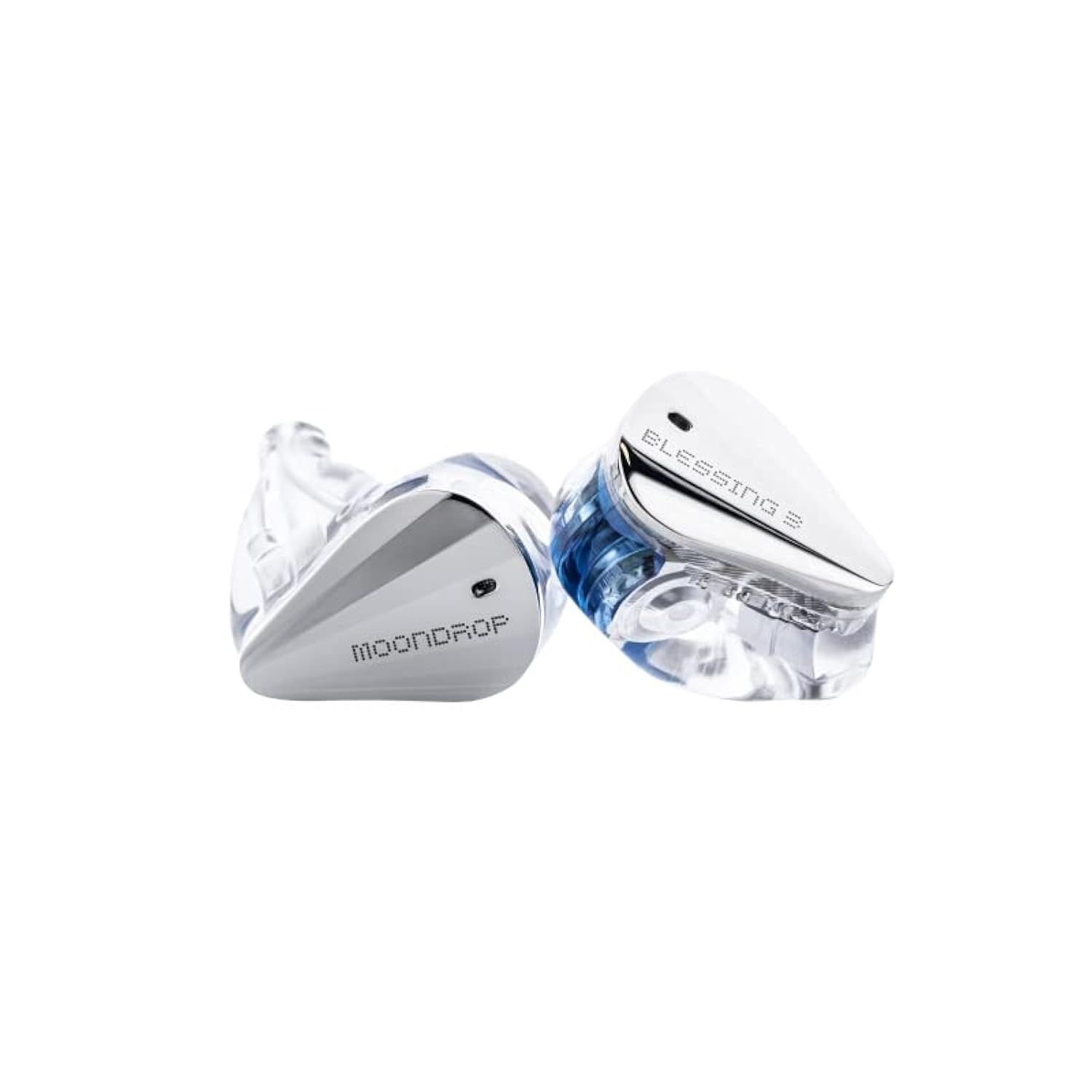Blessing 3vs.Cantor
Sound & Specs Comparison
Information
Both IEMs are widely regarded in the audiophile community. See how they differ in terms of sub-bass response, upper mids, clarity, and overall tonality. Spider charts and rating breakdowns included.
Objective Comparison
Facts, details, stuff.
| General Info | Blessing 3 | Cantor |
|---|---|---|
| Brand | Moondrop | AFUL |
| Country | China | Taiwan |
| IEM Description | The Moondrop Blessing 3 is a hybrid IEM that blends technical detail with a clean, spacious sound. Featuring dual dynamic drivers and four balanced armatures, it delivers tight bass, clear mids, and airy treble with impressive precision. The overall tuning is balanced with a slightly bright edge, making it well-suited for those who enjoy clarity and separation without excessive warmth. | The AFUL Cantor combines technical precision with musicality in a hybrid design. Featuring a dynamic driver for powerful bass and multiple balanced armatures for clean mids and sparkly highs, it delivers a spacious soundstage with excellent separation. Tuning leans slightly toward a balanced-bright signature, making it a solid choice for detail lovers who still want some low-end punch. |
| Price Level | 100 – 500 | 500 – 1.000 |
| Housing & Driver | ||
|---|---|---|
| Driver Config | Hybrid | Multi-BA |
| Driver Types | Dynamic Driver + Balanced Armature | Balanced Armature |
| Shell Material | – | – |
| Cable | – | 4Braid 5N OFC Cable |
| Technical | ||
|---|---|---|
| Freq Range | – | – |
| Impedance (Ω) | – | 20 |
| Sensitivity (dB) | – | 106 |
| Crossover | – | RLC Network Electronic Crossover |
| Platform Info | ||
|---|---|---|
| Comments | 0 | 1 |
| Visit Count | 85 | 128 |
| External Reviews | 0 | 1 |
Meta Ratings
// Nothing to compare yet.
Sound Characteristics
Cantor delivers m tighter sub-bass response, controlling low-end rumble with more precision than Blessing 3 (8.5 vs 6). It renders bass with a greater punch and separation, where Blessing 3 sometimes feels bloated (9 vs 5.5). It translates bass vibrations into a a more visceral experience, while Blessing 3 lacks this tactile feedback (8.5 vs 6.8). The lower midrange on It blends c more smoothly into the bass region, avoiding the disconnect found in Blessing 3 (8.5 vs 7.3). In the upper mids, It sounds c clearer and more articulate, highlighting vocals and lead instruments better than Blessing 3 (8 vs 7). The treble on It is a more nuanced and refined, especially when it comes to cymbals and ambient elements (8 vs 6.8). It creates a a wider soundstage, giving instruments more space and a better sense of placement than Blessing 3 (8 vs 7.3). With a higher resolution, It allows finer textures and room ambiance to shine more than Blessing 3 (8.8 vs 6.8). It separates instruments a more distinctly, helping complex passages remain coherent where Blessing 3 blends them (8.3 vs 6). It avoids frequency masking c more successfully, preserving clarity across the spectrum better than Blessing 3 (8 vs 5.3). The note presentation is a fuller and more tactile on It, giving instruments a stronger physical presence than Blessing 3 (7.5 vs 6.3). It delivers dynamic shifts with m greater impact, making Blessing 3 sound comparatively tame (8.5 vs 6). It controls harsh sibilant peaks m more effectively, making vocals smoother than on Blessing 3 (8.5 vs 4.8). The tone quality of It feels c more organic and true-to-source than the slightly artificial flavor of Blessing 3 (7.5 vs 5). The overall tonality of It is m more balanced and cohesive, offering a sound signature that feels better tuned than Blessing 3 (8.8 vs 6.8). It portrays textures in vocals and strings with e more realism, enhancing emotional depth over Blessing 3 (8 vs 6.8).
| Blessing 3 | Cantor | |
|---|---|---|
| Sub Bass | 6.0 | 8.5 |
| Bass | 5.5 | 9.0 |
| Bass Feel | 6.8 | 8.5 |
| Lower Mids | 7.3 | 8.5 |
| Upper Mids | 7.0 | 8.0 |
| Lower Treble | 6.8 | 8.0 |
| Upper Treble | 7.3 | 7.5 |
| Sound Stage Width | 7.3 | 8.0 |
| Detail | 6.8 | 8.8 |
| Layering | 6.0 | 8.3 |
| Masking | 5.3 | 8.0 |
| Note Weight | 6.3 | 7.5 |
| Slam | 6.0 | 8.5 |
| Sibilance | 4.8 | 8.5 |
| Timbre Color | 5.0 | 7.5 |
| Tonality | 6.8 | 8.8 |
| Texture | 6.8 | 8.0 |
Tonal Signature
// Nothing to compare yet.

